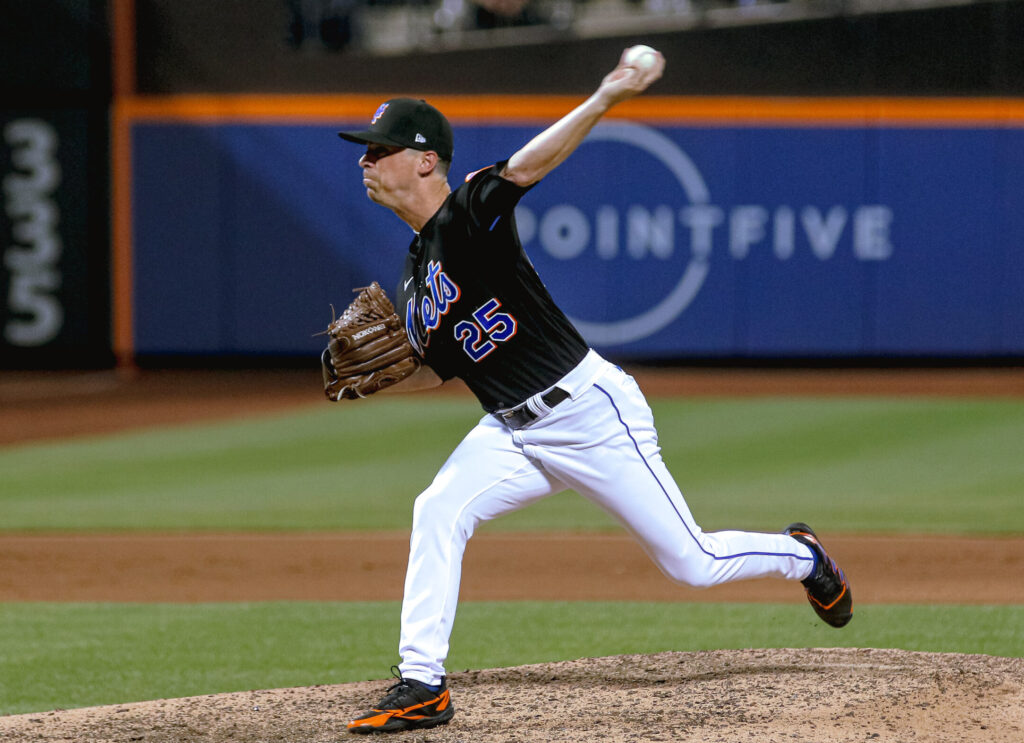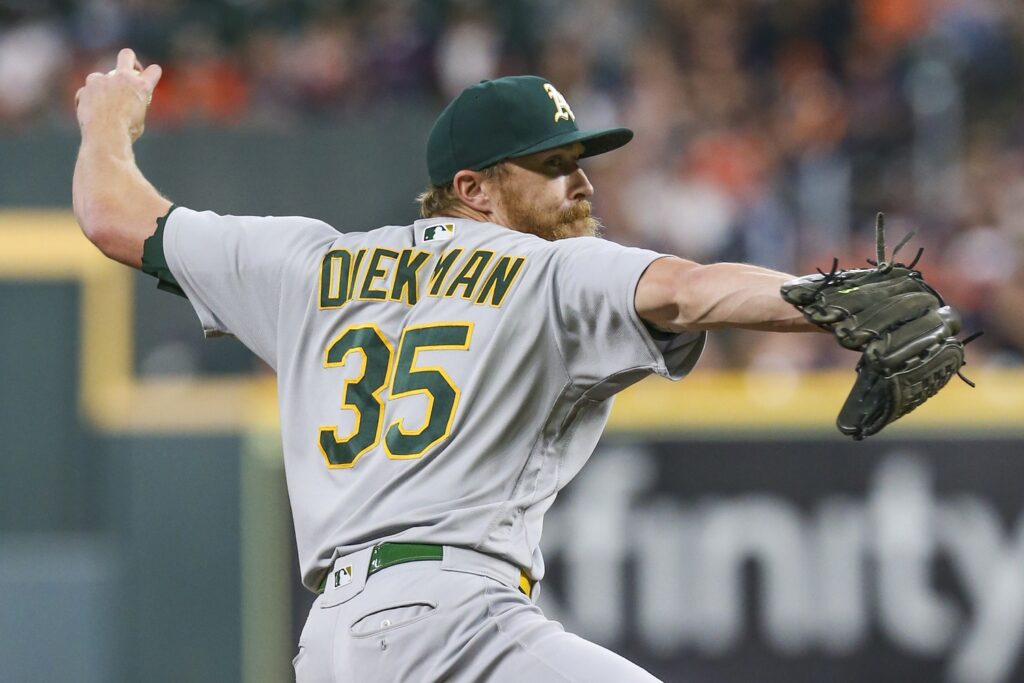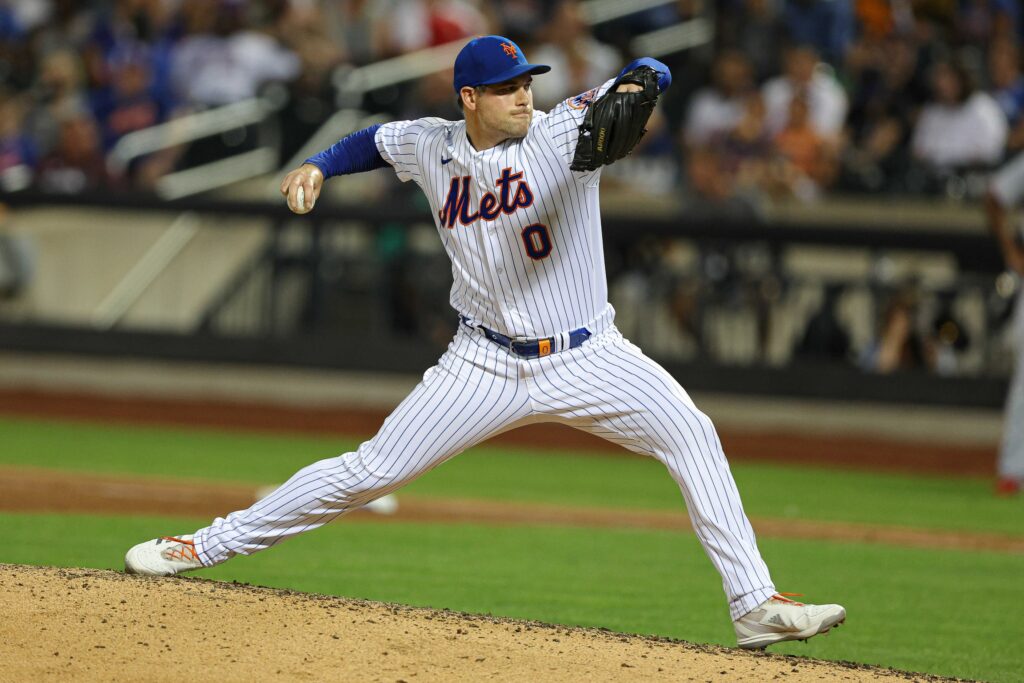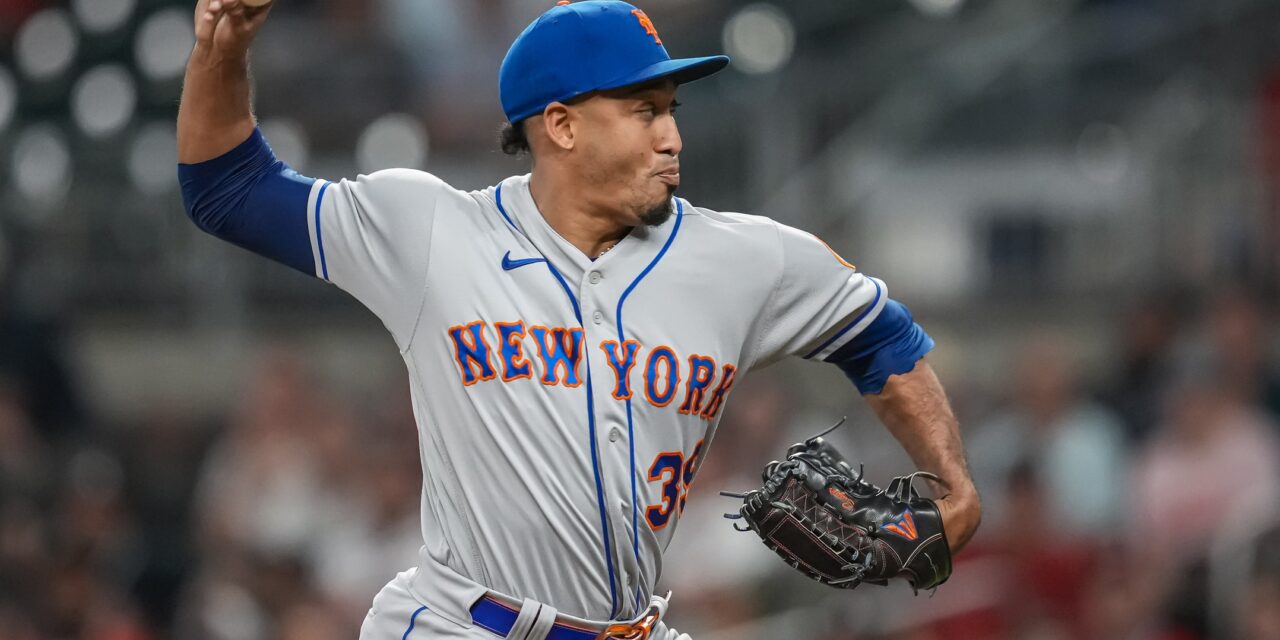This past week the Mets resigned Adam Ottavino, signed Jake Diekman and Shintaro Fujinami. They join Edwin Díaz, Brooks Raley, and previous offseason acquisition Jorge Lopez as potential high-leverage relievers. The Mets under David Stearns have certainly emphasized a few key characteristics when acquiring relievers this offseason; the most obvious of them is the sheer volume of arms they have brought in.
Besides the four aforementioned signees, Stearns and Co. have brought in a litany of guys who will compete with a few incumbents for the final couple of spots in the bullpen. Michael Tonkin, Max Kranick, Yohan Ramirez, Kyle Crick, Austin Adams (currently in DFA limbo) and Yacksel Ríos were all acquired and had no options left. Meaning that if they do not make the Mets 26-man roster out of spring training, they will have to go through waivers. They also brought in Cole Sulser, Danny Young, Cam Robinson, Andre Scrubb and Victor Castaneda, each of whom has options, meaning that they only need to be added to the 40-man roster to ensure their stay in the organization.
Both aspects of bullpen building, having more than a handful of guys to take care of the back end of the bullpen, as well as having a whole host of options to fill out the rest of the bullpen’s innings are aspects that the Mets have not practiced in a very long time. Secondly, the Mets may have never had this amount of velocity in their bullpen ever. Diaz, Fujinami and López can all hit 100 MPH and sit high 90s and Diekman is one of the hardest-throwing left-handed relievers of the last five years.
Another point of interest is something Stearns alluded to a few times during the offseason and that was curating unique looks out of the bullpen. This, too, has been an emphasis as Ottavino, Diekman, and Raley all have unique deliveries and throw across their bodies from diverse arm angles. Yet, overall, there are still a few more trends besides depth, velocity, and arm angle I’d like to look into, specifically repertoire.

Brooks Raley. Photo by Roberto Carlo
CHANGEUPS
Of the six aforementioned high-leverage options, the only one who does not throw a type of changeup is Edwin Diaz. Fujinami throws a nasty splitter and Lopez’s main out-pitch is uniquely his changeup. Yet, more interestingly, both Ottavino and Diekman started throwing a changeup in earnest for the first time in their careers last season. Raley and Diekman both started throwing a changeup while with the Rays and both times, the addition of the pitch had a transformational effect on their outcomes.
Possessing a multitude of relievers who all throw three or more pitches is an unusual and incredible asset for any manager to have. Throwing both offspeed and breaking pitches allows pitchers to retire both same and opposite-handed batters.
Diekman, specifically, had an unparalleled renaissance with the Rays last season, as MMO’s own James Villani explains in his article. After sputtering with the White Sox, Diekman was picked up by the Rays and truly changed his fortune. Adding a changeup to his repertoire allowed Diekman to tunnel his pitches much more effectively. As Diekman has always struggled with command, he tended to leave hittable fastballs over the heart of the plate, and with nothing but a slider, right-handed hitters had a field day against him. The changeup let Diekman stay away from right-handed hitters while still getting them to swing and miss as they could no longer just hack at his fastball now that his changeup was getting them to fish out of the zone.

Mandatory Credit: Thomas Shea-USA TODAY Sports
SINKERS
Another common denominator between these pitchers is their affinity for the sinker. Each of Raley, Ottavino and López throw a high percentage of sinkers. As MMO’s own, James Villani explained why the sinker was integral to López’s success in 2022. And although Fujinami and Diekman do not throw a sinker, their four-seam fastballs are extremely low in spin rate and have a lot more in common with sinkers than with most four-seamers. Therefore, we can instead say that all five throw low spin-rate fastballs.
We have grown accustomed to low spin rate being thought of as a negative. Yet, sinkers and offspeed pitches flourish with a low spin rate. Instead, you should think of spin rate as a spectrum, and curveballs will tend to have the highest, while knuckleballs should have close to none. Splitters are the closest to knuckleballs, in that removing spin makes them harder to hit, for example, Kodai Senga‘s ghost fork had a lowly spin rate of 1100 RPM, whereas the rest of his repertoire was at least double that.
Therefore, this shouldn’t be viewed as a negative, but rather as a concerted effort by the Mets to bring in relievers with this characteristic. And with the days of the launch-angle era seemingly behind us, the Mets are not the only team making a concerted effort to bring in pitchers with a differently shaped fastball. Mike Petriello, over at MLB.com wrote a whole article explaining this phenomenon. Furthermore, I explained that the entire league seems to be shifting back to sinkers and low-spin-rate fastballs, as “the goal of the sinker is not only to trigger confusion but also to induce weak contact by missing the barrel of the bat.”

Vincent Carchietta-USA TODAY Sports
SWEEPERS
There was a time when Ottavino was the only pitcher in the MLB still throwing the sweeper. This time has now passed as the sweeper is the newest pitch to entrench itself in the MLB. Many pitchers added it to their repertoire over the past season, and Raley, Fujinami and Diekman are all examples of this. Similar to Ottavino, all three throw a different, harder kind of slider (or cutter) as well, yet they’ve experienced a great deal of success since adding this pitch to their repertoires. Speifically, Diekman and Raley have been throwing theirs with elite spin rates.
Not only do these pitches seem to be effective offerings for them, but they also play off the rest of their repertoires perfectly.
Conclusion
As the Mets have compiled several options for the backend of the bullpen, they seem to have an overlapping theme to all of them. As I explained in this series, “both the slider and changeup play off the sinker very well because all three have overlapping two-plane movement on the x- and y-axis. This makes tunneling all three pitches seamless and can create serious problems for batters who not only have to deal with all the movement but also disruptions in their timing.”
The Mets have collected a wealth of intriguing options as well as a bunch of depth pieces, which should go a long way to providing insurance for this team over a long season. Additionally, I didn’t even mention the handful of relievers that are already in-house or the burgeoning list of relief prospects the Mets have in the upper minors. While the methodology seems sound, it always comes down to performance between the lines. Mets fans might be eternally hesitant to buy into what are seemingly only marginal acquisitions. I hope that Cohen and Stearns will slowly but surely build that trust up again with a fanbase that’s been missing that for far too long.
















